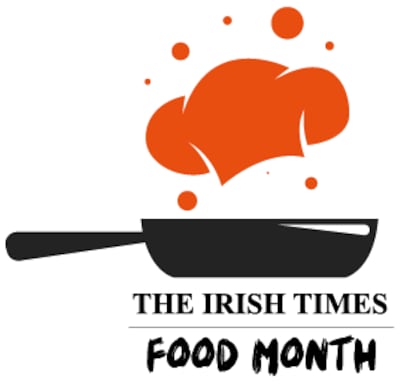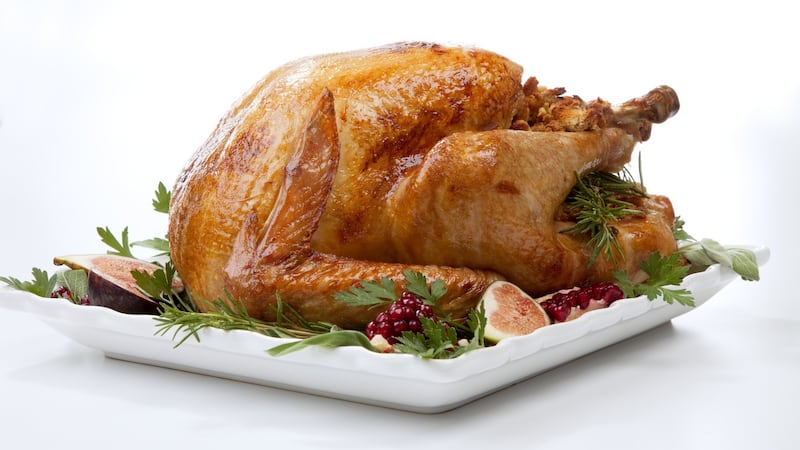In these days of an increasingly shared global culture, it seems no matter where we live, we are all fated to enjoy the same foods, music, television shows and even holidays. Witness the way Halloween, or Samhain, has swept the globe. Although in fairness, who doesn’t like dressing silly and eating bottomless bags of sweets?

But there are still a few holidays that remain resolutely fixed. The idea of Ireland adopting an American-style Thanksgiving, which has been bruited about recently, is about as incongruous as the United States suddenly deciding to honour St Brigid's Day (still, I wouldn't be surprised if some ambitious Walmart manager isn't busy sourcing reed crosses from a third-world country as we speak).
That’s because Thanksgiving, as it is currently celebrated (as opposed to how it originally might have been envisioned) is a uniquely American holiday.
Often there would be a bonus of another pie or cheesecake, or my niece's production of Nigella Lawson's sticky toffee pudding – because only a fool would pass up sticky toffee pudding
It is one of the few times the country’s frantically mobile population pauses to reflect on family and heritage. That we do it at the dinner table, with that most visceral of reminders, food, only makes it more powerful.
Statistics vary regionally, but a recent survey found that fewer than 40 per cent of Americans live in the same state in which they were born (and remember there are a dozen states larger than Ireland). Fewer than 10 per cent have lived in the same place for 50 years or more.
Blow-ins
We are a nation of blow-ins. But on the fourth Thursday in November, we gather to celebrate the foods that remind us of who we are and where we come from, in a way that seems redundant, even laughable, in a tightly knit society such as Ireland’s.
So many Americans live so far from where they grew up (and certainly farther still from where their parents grew up), but our Thanksgiving menus still reflect those family traditions.
Several years ago there was a sociologist who made quite a buzz by successfully predicting within 100 miles an American family’s origins based only on what was served on their Thanksgiving menu.
Brilliant as he might have been, my family's Thanksgiving menus would have driven him mad. But it is all ours, very American, and almost every dish reminds us of some aspect of our shared family history. I am a lifelong blow-in. I grew up a military brat, my family moving nearly every year. Add on extended periods of time living in the American southwest and in southern California (plus, my predilections as a food writer) and you've got quite a menu mix.
Until we moved to Ireland, we would celebrate Thanksgiving at my sister's house, near where my dad retired in Arizona. The average temperature there at Thanksgiving is 25 degrees and it can be as hot as 30 or even 35.
Our dinners would start with my sister’s lavish spread of celery, carrots, peppers, olives and nuts. There would be baskets of tortilla chips with good green chile salsa (note the preferred New Mexican spelling – very important to distinguish it from that stew made in Texas). And I’d bring crisp persimmons from our tree in California to make a savoury salad, with lime juice, cilantro and pomegranate seeds.
Three different stuffings
There would be roast turkey and gravy, of course, but served with three different stuffings. There would be a basic celery and breadcrumb inherited from my midwestern parents; an oyster dressing that became part of our family’s tradition when we lived in the south; and another with sausage and kale that works well for my diabetic brother-in-law.
Thanksgiving dressings for turkey, it must be said, have evolved into a form of American folk art. One year in Los Angeles, we held a readers' competition and the winners included a bird stuffed with tamales and another dressing made from glutinous rice and lap cheong, Chinese dried sausages.

There would be my dad’s wife’s classic midwestern green bean casserole topped with crunchy canned-fried onions, and east coast creamed pearl onions from my wife’s family.
Sweet potatoes – if I was feeling fancy, roasted, sliced and baked in cream as a gratin, or in the more traditional southern style – beaten into a buttery purée. Occasionally, bowing to the wishes of the younger generation, I’d even top the mash with marshmallows.
Of course, one of the centrepieces would be my mom’s spiced cranberry sauce (seriously, one of the most requested recipes I’ve ever published, it has its own cult following in the States). In later years, it was usually kept company by my niece’s relish of chopped raw cranberries and lime zest, a tart-worthy counterpoint.
On first pass, we’d take a big tablespoon of each dish so no cook would feel left out, then dive back in for big second helpings of the foods we really craved.
After letting that settle while watching some really bad television, out would come the desserts: always a midwestern pumpkin pie and a southern pecan pie, each accompanied by mounds of whipped cream. Often there would be a bonus of another pie or cheesecake, or my niece’s production of Nigella Lawson’s sticky toffee pudding – because only a fool would pass up sticky toffee pudding.
We’ve pared that menu down since moving to Ireland, but the thought remains the same: like millions of Americans, no matter how far we are from where our families started, when we gather at the table we give thanks that we’re home.












